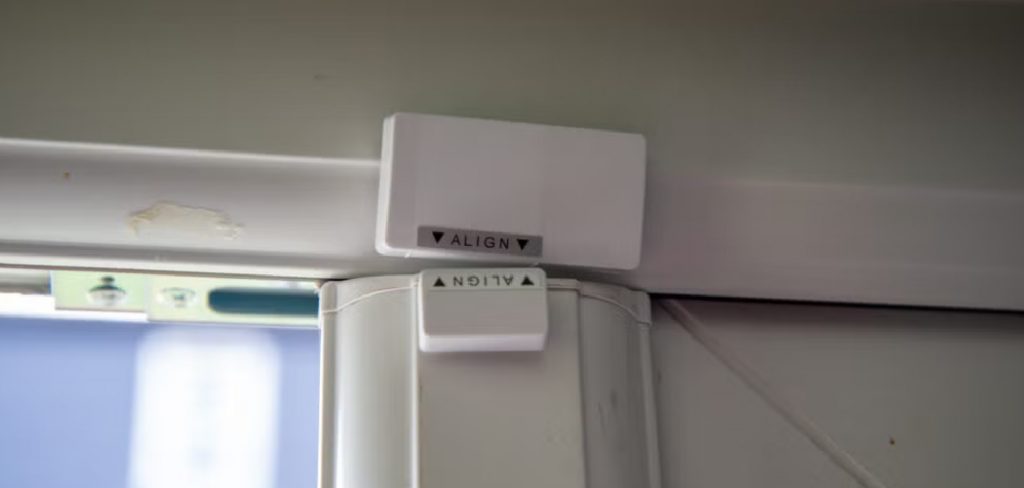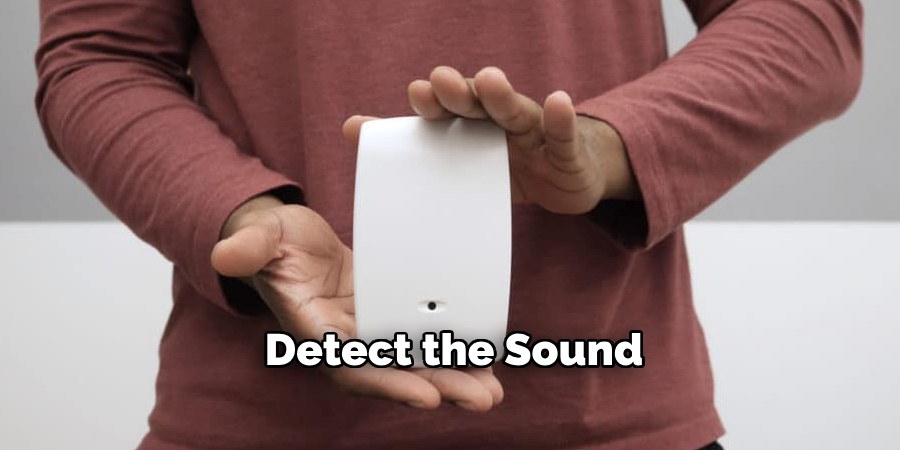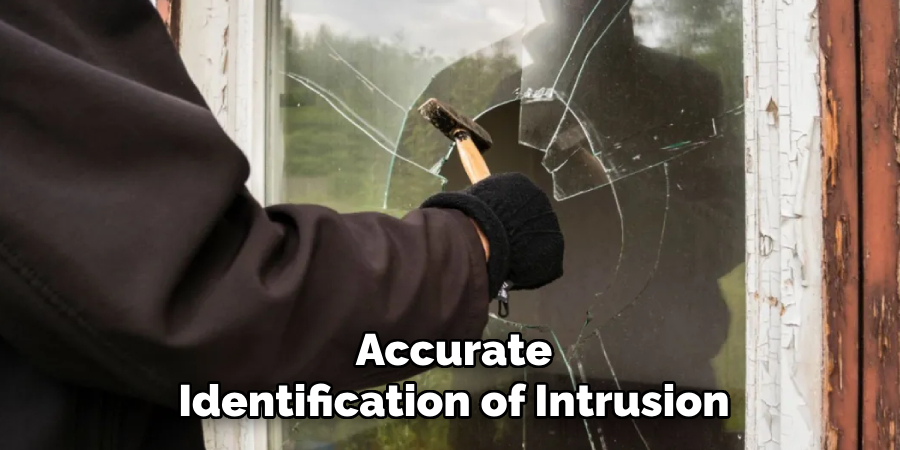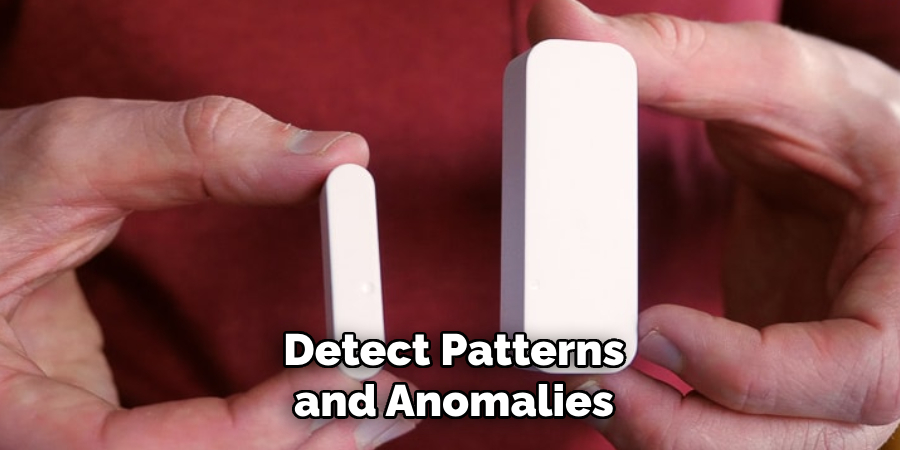Are you concerned about the security of your home or office? Glass break sensors are a great addition to any security system.

Glass break sensors are essential to modern security systems, designed to detect the sound or vibrations associated with breaking glass. These sensors provide an added layer of protection by identifying potential intrusions through windows or glass doors.
By utilizing advanced audio frequency analysis or vibration detection technology, glass break sensors can distinguish the unique acoustic patterns of shattering glass from other household noises. This ability ensures reliability and minimizes false alarms, making these devices a crucial tool for safeguarding homes and businesses.
Understanding how do glass break sensors work can help users maximize their security systems’ efficiency and effectiveness. Let’s take a closer look at the factors that contribute to how glass break sensors operate.
What Are the Benefits of Glass Break Sensors?
- The first and most apparent advantage of glass break sensors is their ability to detect potential intruders.
- They offer an extra layer of protection, complementing other security measures such as door and window sensors or motion detectors.
- Unlike other types of sensors that only trigger when a physical entry point is breached, glass break sensors can detect attempts at forced entry through windows, glass doors, or skylights without direct contact.
- Glass break sensors are also designed to respond quickly to high-frequency sound waves emitted by shattering glass. This swift response time allows for prompt alerts and enables homeowners or business owners to act immediately in case of an intrusion.
However, the benefits of glass break sensors go beyond just detecting potential break-ins. They also offer added convenience and peace of mind for users.
What Will You Need?
To install and use glass break sensors effectively, you will need the following:
- Glass Dreak Sensor(s): There are various types of glass break sensors available on the market, such as acoustic sensors, shock sensors, or dual technology sensors. You can choose from multiple options depending on your specific needs and budget.
- Power Source: Most glass break sensors require a power source to function. Some models may run on batteries, while others must be hardwired into the building’s electrical system. Be sure to check the power requirements for your chosen sensor before installation.
- Control Panel: The control panel serves as the brain of your home security system and receives signals from all connected devices, including glass break sensors. Make sure your chosen sensor is compatible with your control panel.
8 Easy Steps on How Do Glass Break Sensors Work
Step 1: Understand the Basics

Glass break sensors are devices designed to detect the sound or vibration of breaking glass, which is often an indicator of a forced entry. These sensors use advanced technology, such as microphones or accelerometers, to pick up the specific sound frequencies or shock waves shattered glass produces.
By understanding how they operate, you can ensure they are used effectively as part of your home security system. It’s important to note that glass break sensors typically cover areas with large windows or doors, adding an extra layer of protection alongside door and window sensors. Familiarizing yourself with the fundamental principles of how they work will help you make informed decisions about placement and functionality.
Step 2: Learn About Sound Frequency Detection
Glass break sensors detect the unique sound frequencies of broken glass. Most sensors are designed to pick up two specific sounds simultaneously — the initial high-pitched shattering sound of glass breaking and the low-frequency thud following the impact.
By analyzing these frequencies, the sensor can determine whether actual glass breakage has occurred, reducing the risk of false alarms triggered by other loud noises. This precise detection mechanism ensures the sensor activates only when necessary, maintaining the security of your home without unnecessary disruptions.
Step 3: Advanced Features of Glass Break Sensors
Modern glass break sensors have various advanced features that enhance their functionality and reliability. One key feature is dual-stage detection, which identifies the sound frequencies associated with glass breaking and analyzes vibration patterns to ensure accurate identification of intrusion attempts. Many sensors now incorporate machine learning algorithms, allowing them to adapt and improve over time by distinguishing between normal household sounds and potential security threats.

Step 4: Wireless Connectivity
Wireless connectivity has become increasingly popular in home security systems, allowing remote monitoring and control. This feature will enable homeowners to access their security system from a mobile device or computer, providing real-time updates and alerts. Some systems also offer the ability to integrate smart home technology, allowing users to monitor their security and control other aspects of their home, such as lighting and temperature.
In addition to convenience, wireless connectivity also offers flexibility in terms of installation. Unlike traditional systems requiring wiring throughout the home, wireless systems use sensors that communicate via Wi-Fi or cellular signals via a central hub. This eliminates the need for drilling holes and running wires, making installing and customizing a security system to fit any home layout easier.
Step 5: Increased Awareness of Home Security Risks
With the rise of smart home technology and wireless connectivity, there is also an increased awareness of home security risks. As more devices become interconnected and integrated into our daily lives, there is a growing concern for potential vulnerabilities and breaches in security.
This has led to advancements in security measures, such as secure encryption protocols and two-factor authentication, to protect against hacking attempts. Some companies even offer regular software updates to update their systems with the latest security measures.
Homeowners are also becoming more proactive in securing their homes by implementing additional layers of protection, such as video surveillance, motion-activated lights, and voice-controlled door locks. These features provide added peace of mind and serve as effective deterrents against potential intruders.
Step 6: Keeping Up With Advancements
Technology is constantly evolving, and the security industry is no exception. As new threats emerge, companies continually develop innovative solutions to combat them. This means that homeowners and businesses alike must stay informed about the latest advancements in security technology to ensure they are adequately protected.
One of the most significant developments in recent years has been the integration of artificial intelligence (AI) into security systems. AI-powered cameras can recognize and track movements, identify potential threats, and alert authorities when necessary. Machine learning algorithms can also analyze data from various sources to detect patterns and anomalies that may indicate suspicious activity.

Step 7: Continuous Monitoring
Continuous monitoring is an essential aspect of maintaining a strong security posture. It involves regularly assessing and reviewing the effectiveness of implemented security measures, identifying any vulnerabilities or weaknesses, and taking action to address them.
To effectively monitor security systems, organizations should have real-time visibility into their networks, devices, and data. This can be achieved through network monitoring tools and software that provide alerts and notifications for any unusual activity.
Organizations should also conduct regular penetration testing to identify potential vulnerabilities in their systems. These tests simulate attack scenarios to determine how well the current security measures hold up and what improvements may be needed.
Step 8: Establish Strong Access Controls
Implementing strong access controls is critical in safeguarding an organization’s sensitive data. This includes enforcing the principle of least privilege, where users are granted only the minimum level of access required for their tasks, and ensuring robust authentication methods. Utilizing multi-factor authentication (MFA) adds a layer of protection, reducing the risk of unauthorized access. Access rights should be reviewed and updated regularly to prevent outdated permissions from becoming vulnerabilities.
By following these security practices, organizations can reduce the likelihood of a data breach and protect their valuable assets.
5 Things You Should Avoid
- Ignoring Calibration Requirements
Glass break sensors require proper calibration to function accurately. Failing to calibrate them can lead to false alarms or missed detections.
- Installing Sensors Near Constant Noise Sources
Placing sensors close to areas with consistent background noise, such as machinery or loud appliances, can interfere with their ability to detect glass-breaking sounds properly.
- Using the Wrong Type of Sensor for the Environment
Not all sensors are suitable for every location. Avoid using glass break sensors designed for indoor use in outdoor settings, as environmental factors like wind and rain can cause malfunction.

- Overlooking Regular Maintenance
Glass break sensors need periodic maintenance to ensure they are clean and free of dust and debris. Neglecting this can impair their sensitivity and effectiveness over time.
- Relying Solely on Glass Break Sensors
Depending entirely on glass break sensors without complementing them with other security measures, such as motion detectors or cameras, can leave gaps in overall surveillance and protection.
Conclusion
Glass break sensors detect the unique sound frequencies generated when glass is broken.
Using advanced microphones or vibrations, these sensors analyze the acoustic patterns or shock waves to determine if an incident has occurred. They effectively provide perimeter security by promptly alerting homeowners or security systems to potential break-ins. However, their functionality can be maximized when paired with other security devices, ensuring a comprehensive and layered approach to protection.
Hopefully, the article on how do glass break sensors work has given you a better understanding of their technology and role in home security.
About
Safety Fic is a distinguished figure in the world of Diy design, with a decade of expertise creating innovative and sustainable Diy solutions. His professional focus lies in merging traditional craftsmanship with modern manufacturing techniques, fostering designs that are both practical and environmentally conscious. As the author of diy, Safety Fic delves into the art and science of Safety Fic-making, inspiring artisans and industry professionals alike.
Education RMIT University
(Melbourne, Australia) Associate Degree in Design (Safety Fic) Focus on sustainable design, industry-driven projects, and practical craftsmanship. Gained hands-on experience with traditional and digital manufacturing tools, such as CAD and CNC software.
Nottingham Trent University
(United Kingdom) Bachelor’s in diyfastly.com and Product Design (Honors) Specialized in product design with a focus on blending creativity with production techniques. Participated in industry projects, working with companies like John Lewis and Vitsoe to gain real-world insights.
Publications and Impact
In diy, Safety Fic his insights on indoor design processes, materials, and strategies for efficient production. His writing bridges the gap between artisan knowledge and modern industry needs, making it a must-read for both budding designers and seasoned professionals.
